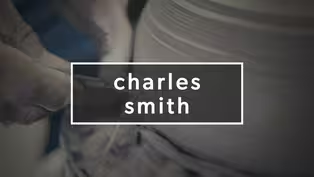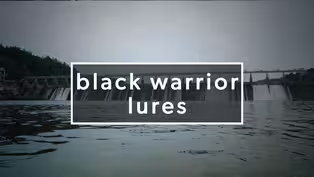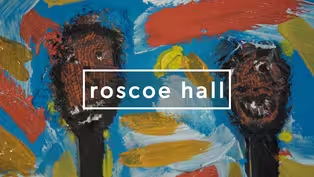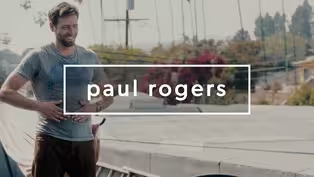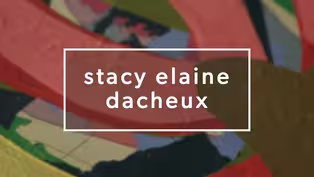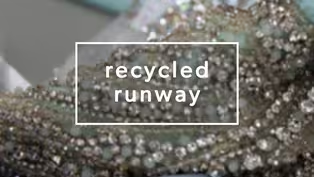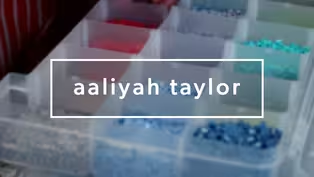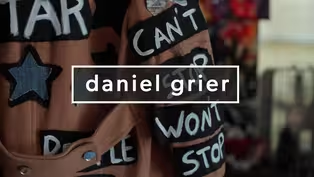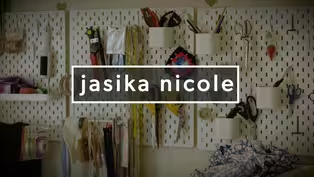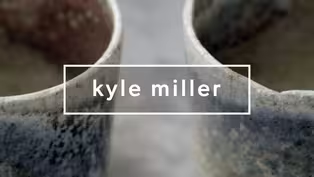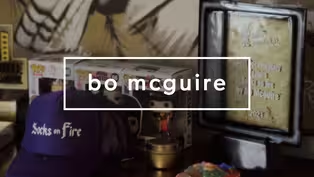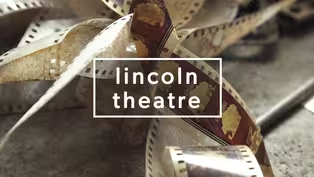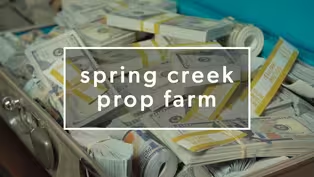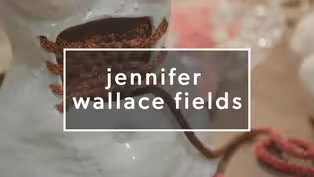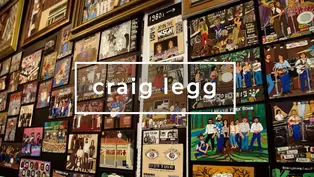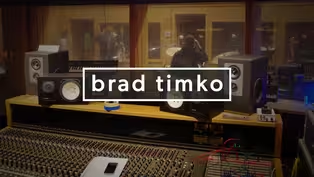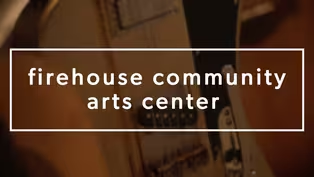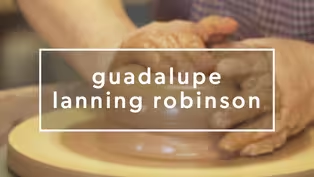Monograph
Jennifer Wallace Fields
Clip: Season 5 | 7mVideo has Closed Captions
A studio visit with ceramic artist Jennifer Wallace Fields
Visit Lit Deer Studio in Springville, AL and see artist Jennifer Wallace Fields embrace whimsy, mystery, duality, and metaphor. Raised in the Appalachian foothills of North Alabama, Fields has been working with clay since she was 12 years old. Her work has embodied many forms throughout her career as a visual artist, often pulling inspiration from the natural world, folklore tradition, and craft.
Problems playing video? | Closed Captioning Feedback
Problems playing video? | Closed Captioning Feedback
Monograph is a local public television program presented by APT
Monograph
Jennifer Wallace Fields
Clip: Season 5 | 7mVideo has Closed Captions
Visit Lit Deer Studio in Springville, AL and see artist Jennifer Wallace Fields embrace whimsy, mystery, duality, and metaphor. Raised in the Appalachian foothills of North Alabama, Fields has been working with clay since she was 12 years old. Her work has embodied many forms throughout her career as a visual artist, often pulling inspiration from the natural world, folklore tradition, and craft.
Problems playing video? | Closed Captioning Feedback
How to Watch Monograph
Monograph is available to stream on pbs.org and the free PBS App, available on iPhone, Apple TV, Android TV, Android smartphones, Amazon Fire TV, Amazon Fire Tablet, Roku, Samsung Smart TV, and Vizio.
Providing Support for PBS.org
Learn Moreabout PBS online sponsorship- I was actually taught how to throw when I was 12 by a farmer with clay that he dug and processed himself.
My earliest influences came in the form of Appalachian craft and folklore and storytelling traditions.
I was raised in North Alabama in the foothills of the mountains, and my parents imparted on the appreciation and respect for handmade items as well as a connection and a resourcefulness of materials.
My process involves hand building and slip casting raw clay, which I don't do it myself.
I do purchase that, and then I either roll it out in a slab or build whatever object I'm thinking of at the time.
And then I typically combine with elements that I've found from nature or found objects that I've rescued from the thrift stores.
Slip casting is a process where you take a liquid form of clay and pour it into a mold and let it set up and then when you open the mold, you have the three dimensional form.
And then with hand building, it's building a structure from the clay.
Instead of say, centering it on a wheel and throwing it, you can either construct it from a pattern, like sewing a dress or assembling a kit, or you can use like a coil method.
I mean, things do break, like, that just happens, but a lot of times I will work with those breaks or fractures to turn it into something else.
Because so much of my process is a discovery within itself.
I feel like it's a collaboration with the clay and with my pieces to kind of help them become what they want to be as well.
And so, you know, just like us, just because something's broken doesn't mean that it's over.
Clay body itself actually has memory.
As it dries, it kind of sinks back into itself and it gives it like a certain feeling of movement and gravity and weight.
(soft music) The way that folklore and storytelling tradition influenced me was it really awakened a part of me interested in mystery and things that were larger than life.
It also gave me a feeling that there was an underpinning just below the surface.
These threads that kind of bind us all together in ways that we don't, we don't often consciously explore.
Universal things that we all experience, like birth and death and decay.
There are so many synthesized boundaries around those experiences that I feel we don't get to fully engage with them and it creates distance between not only our own experience, but between each other in places that we could connect.
We instead kind of go further apart.
That's actually one of the reasons why I am so drawn to nature.
I feel like when you're in nature, these life cycles and season cycles are always evident and like nothing can be hidden in nature and there's no imaginary boundaries around us.
The way that my altar started is really because I have a love of found objects, and that is because of the story that they have to tell within themselves.
There's something magical that happens when you end up putting the right objects together.
They speak to each other and they tell more of an overarching story of some truth or a narrative.
Many times I have found pieces with family photos or handwritten notes tucked inside or dates inscribed on the bottom, and it just is this question of like how did this once prized possession become a castaway?
And so I kind of feel in a way that the story and the life of that object needs to be represented or documented.
I remember as a kid going over to my aunt's and my grandmother's houses and just obsessing over certain trinkets or objects that they had and eventually, some of these items came into my possession, but it didn't quite feel the same.
I found that by combining several of the objects together or adding, you know, different things to it, I could reignite the the luster or the magic that was connected to the nostalgia in memory.
There is definitely an element of whimsy to my work, either visually or sometimes it's through the title.
And I like to keep that element of lightness present for a few reasons.
One is just because if somebody looks at a piece and they laugh or they chuckle, that's great.
I mean, when I make art, I just want people to feel something.
If that's what they take away from it, that's perfectly fine, but there's also an opportunity to dig a little deeper.
Like if you think that title is funny, what is that?
Is that a poem?
Is it a lyric to a song?
You know, there's always a chance to think about it on another level.
You definitely don't have to, but I feel like keeping a little whimsical nature to it kind of lays that invitation open and makes it more accessible.
If I could give advice either to younger me or any younger artist, I would say don't stop.
Like there have been times throughout my career when I question whether I was even an artist anymore but life happens and you just have to keep going and making and it never leaves you.
It's always there.
Just whenever you're ready.
(soft music closes)
Video has Closed Captions
Clip: S5 | 6m 47s | Charles Smith shows you where to find the story hidden in plain sight. (6m 47s)
Video has Closed Captions
Clip: S5 | 6m 59s | A fisherman outside of Tuscaloosa is always finding new ways of doing things. (6m 59s)
Video has Closed Captions
Clip: S5 | 8m 19s | Chef and painter Roscoe Hall brings his life's experiences together to find his own voice. (8m 19s)
Video has Closed Captions
Clip: S5 | 6m 15s | Oscar-winner Paul Rogers on the value of collaboration and the core of outstanding work. (6m 15s)
Video has Closed Captions
Clip: S5 | 5m 9s | Painter and writer Stacy Elaine Dacheux (5m 9s)
Video has Closed Captions
Clip: S5 | 5m 45s | Birmingham youths transform old clothes into high fashion. (5m 45s)
Video has Closed Captions
Clip: S5 | 6m 54s | Birmingham, Alabama jewelry and clothing designer, Aaliyah Taylor (6m 54s)
Video has Closed Captions
Clip: S5 | 4m 34s | Highlighting the world of fashion in the Magic City with Daniel Grier (4m 34s)
Video has Closed Captions
Clip: S5 | 7m 45s | Actor and maker based in Los Angeles, Jasika Nicole (7m 45s)
Video has Closed Captions
Clip: S5 | 4m 43s | Fairhope, Alabama ceramics artist, Kyle Miller (4m 43s)
Video has Closed Captions
Clip: S5 | 5m | Poet and Filmmaker Bo McGuire from Gadsden, AL (5m)
Video has Closed Captions
Clip: S5 | 6m 14s | The story of Bessemer's historically Black theater and efforts to restore it. (6m 14s)
Video has Closed Captions
Clip: S5 | 5m 37s | tour spring creek film prop farm in montevallo alabama (5m 37s)
Video has Closed Captions
Clip: S5 | 7m | A studio visit with ceramic artist Jennifer Wallace Fields (7m)
Video has Closed Captions
Clip: S5 | 4m 50s | Craig Legg's Birmingham rock and roll retrospective. (4m 50s)
Video has Closed Captions
Clip: S5 | 4m 48s | Visit a historic recording studio near Muscle Shoals (4m 48s)
Firehouse Community Arts Center
Video has Closed Captions
Clip: S5 | 5m 54s | Firehouse Community Arts Center in Avondale, AL (5m 54s)
Video has Closed Captions
Clip: S5 | 4m 33s | Alabama based potter stays grounded to her Mexican roots through her craft (4m 33s)
Providing Support for PBS.org
Learn Moreabout PBS online sponsorshipSupport for PBS provided by:
Monograph is a local public television program presented by APT
